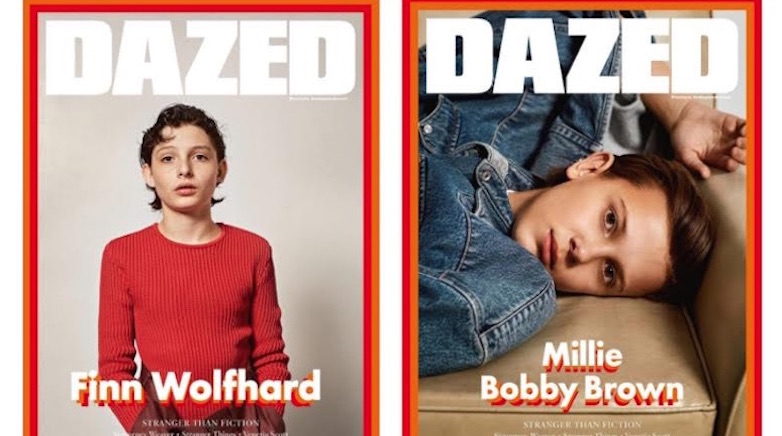
Dazed, the youth fashion and culture magazine, is launching three new verticals in the coming months: Dazed News, Dazed Beauty and one focused on streetwear, after seeing what content is flying on Instagram.
Dazed Media, which publishes Dazed, female luxury title AnOther, and male luxury title AnOther Man, already has five Instagram accounts across the titles. Each day its six-person social team posts approximately three images or videos to each account, the main is Dazed which has 900,000 followers. It uses the platform to tease the magazine, post quotes and cover art, as well as usual behind-the-scenes access to fashion shoots. By the summer it expects to have over 2 million followers across Instagram.
“Instagram is a destination in itself, it’s not a concern that it doesn’t drive much traffic,” said Bridget Mills-Powell, head of digital at Dazed.
Since recently posting content from protests, including from The Women’s March and rallies against Trump, it has seen there’s “a real appetite for news.” These posts get around 20,000 likes and 250 comments where most others have less than 10,000 likes.
For Dazed Beauty, it plans to bring on a team of five in the spring, which, like Dazed News, will sit on site and have its own social channels. After running beauty polls on Instagram around Fashion Weeks it has carved out an audience. “A lot of beauty coverage has become stale,” said Sophie McElligott, head of communications, “diversity is still really lacking in the beauty industry, publishers may follow the trends but none are as fully committed to it.”

Instagram has long been a priority for Dazed. Videos are shot specifically for Instagram, the main Dazed account also runs Instagram Live tutorials, and daily Stories — each Story hits six figures. In the last month it has started posting Stories that show off magazine-style galleries, which link back to the website. In 2007, when AnOther Man launched in print, its only online presence was an Instagram account, which has grown to 212,000 followers.
“It’s important to stay focussed on social media platforms,” points out Mills-Powell. “Even if that focus might change in six months time, we need to stay nimble, and you can’t do everything.”
For Dazed, Instagram is about reaching international audiences: The magazine arrives at newsstands three weeks later in the U.S., Instagram acts as “a portal to another world,” she said.
Dazed doesn’t share print circulation figures, but has previously claimed 3.5 million monthly visitors online. Splitting up more verticals, a route many publishers have gone down, makes a more targeted sell for advertisers.
Running ads within Stories isn’t something Dazed does for clients yet. The bulk of revenue comes from content it creates with brands, which it works hard to make indistinguishable from editorial. The 20-person Media Studio, launched two years ago to create branded content — brands including Nike, Barbie and eyewear company, Luxottica — works closely with the rest of the team. Its London headquarters has about 200 employees, 40 of which are in the digital team. The content studio is the fastest growing wing of the company, in terms of employees and revenue, but Dazed couldn’t give out specifics.
Where advertisers are increasingly squeamish around brand safety, Dazed acts as vehicle for those that want to do something risqué but are too nervous. “Brands hire us to be brave for them,” said McElligott. “We had models on the cover with hairy armpits in the 90s.”
More in Media

A timeline of the major deals between publishers and AI tech companies in 2025
Here’s a list of all the major deals signed between publishers and AI tech companies in 2025.

No playbook, just pressure: Publishers eye the rise of agentic browsers
For the bulk of publishers, Google is, as ever, the one to watch. It’s already got agentic features within its Chrome browser, but that’s the tip of the iceberg, some say.

The biggest SEO lessons in 2025 for publishers
KPIs are changing, more AI search data is becoming available, and publishers are looking beyond search to grow their audiences and revenue.





